Bresaola, sometimes referred to as beef prosciutto, is a traditional Italian cured meat hailing from the Lombardy region in Northern Italy. This specialty meat is known for its rich flavor and lean texture, making it popular among those seeking a healthier option to indulge in Italian cuisine. The classic Bresaola della Valtellina is made by dry-curing a quality cut of beef, such as top round, in a mixture of salt and spices until it reaches the desired tenderness and develops a dark red, almost purple hue.
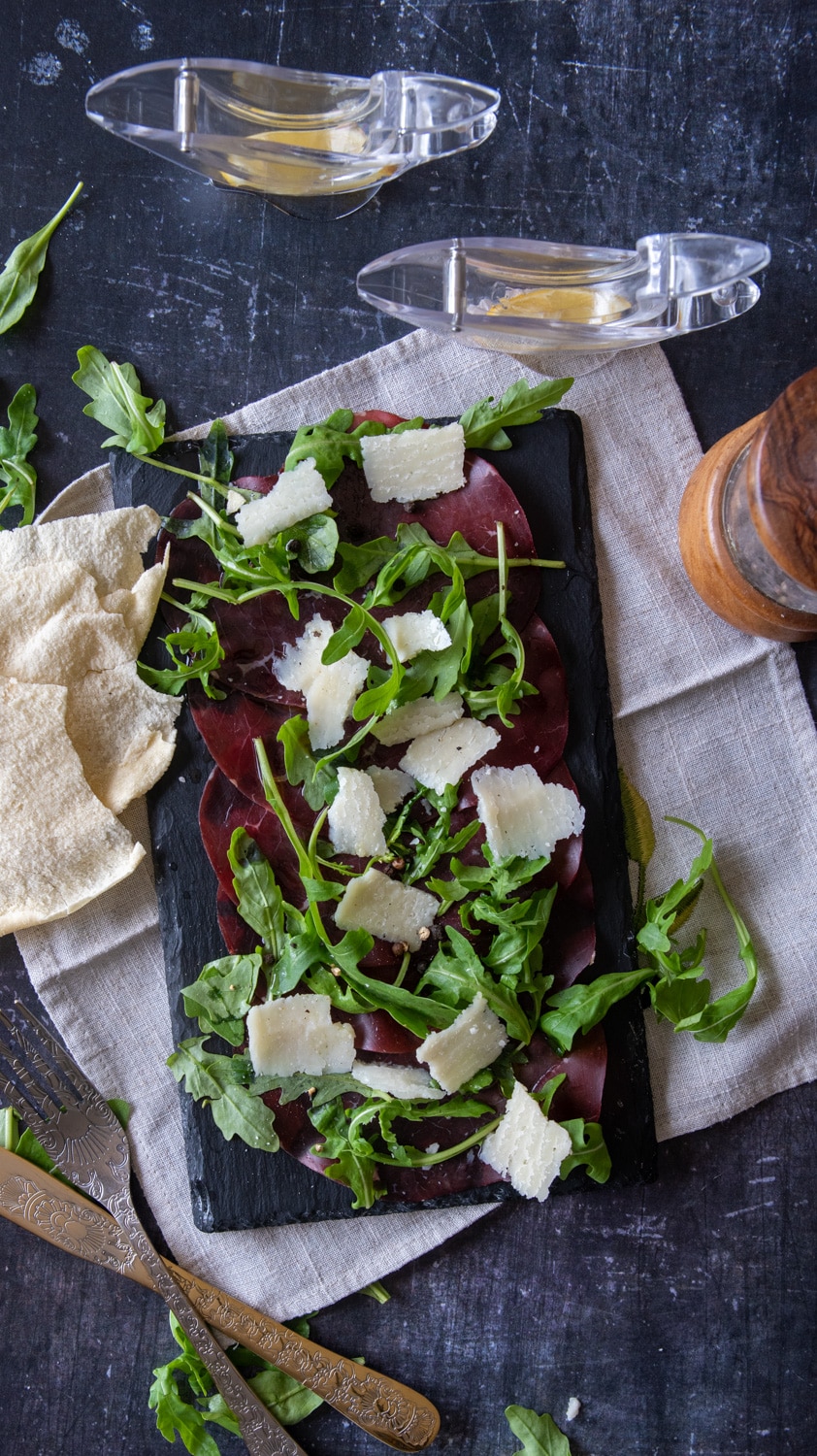
Jump to:
When you think of Italian cured meats, the most common ones that might come to mind are prosciutto, salami, or pancetta.
However, Bresaola stands out as a unique and delicious alternative, particularly since it is made from beef rather than pork.
The Lombardy region, where this cured meat originates from, is known for its beautiful Alpine valleys and extensive culinary traditions, contributing to traditional Bresaola's exceptional taste and quality.
If you're eager to try this delectable Italian specialty, it's best to serve it thinly sliced as part of an antipasto platter or alongside other cured Italian meats, cheeses, and olives.
A good Bresaola should have a velvety texture with a rich and subtly sweet flavor, perfectly complementing a variety of dishes and flavors.
So, whether you're an avid fan of Italian cuisine or just curious about lesser-known delicacies, Bresaola is a must-try classic that will leave you yearning for more.
For more light, quick healthy Italian lunches, you can check beef carpaccio, raw artichokes salad, vitello tonnato, Russian salad
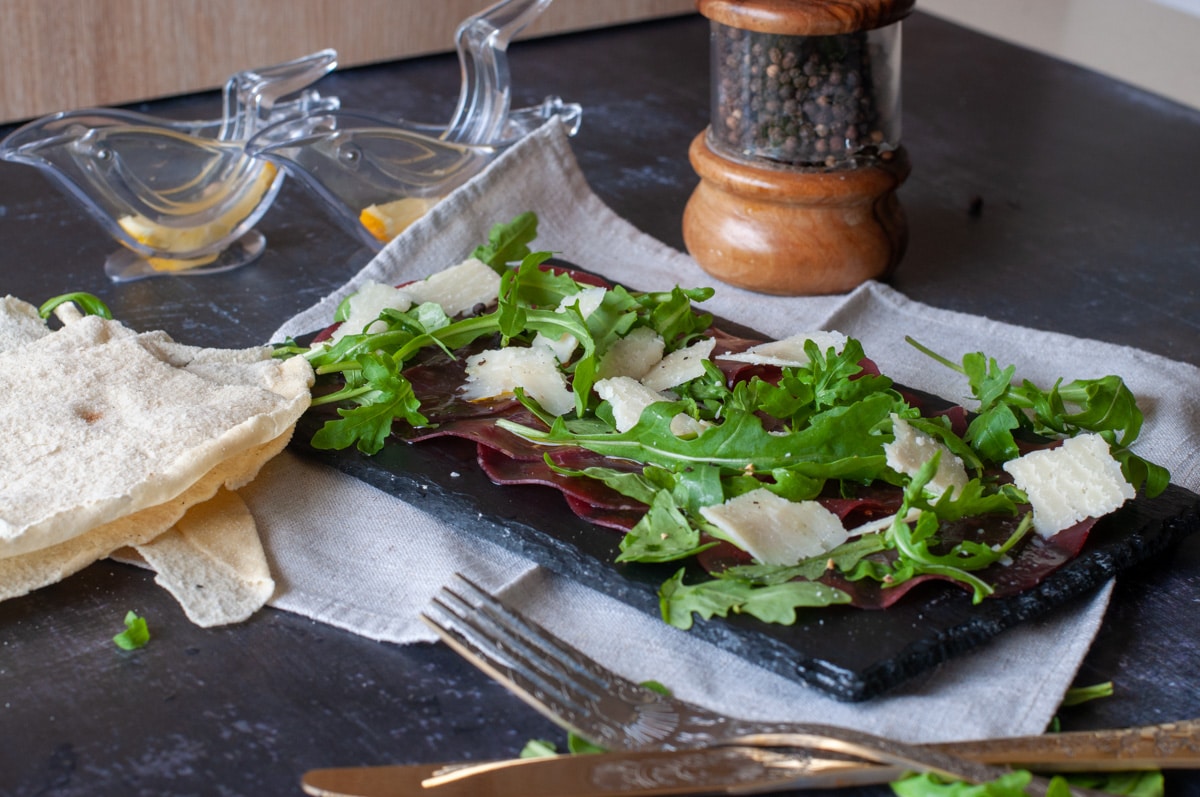
History and varieties
Alpine valleys have been producing salted beef using a preservation method that involves salted and dry-cured beef, sheep, and game for centuries.
This technique has been widely used in the Alps since the early Middle Ages.
Beef Bresaola has a rich history that can be traced back between 1450 and 1500, with origins in Chiavenna. It boasts a range of variations, from beef to horse meat, smoked or unsmoked.
Although it shares some similarities with the dried meat of the Canton of Grisons, bresaola has evolved over time and now holds a unique identity.
Historically, bresaola was produced solely for local or valley consumption until the 19th century, when industrialization in Chiavenna led to increased production and distribution beyond the valley.
It wasn't until the 1960s that bresaola gained widespread popularity throughout Italy and Switzerland, following its expansion into Valtellina.
Bresaola della Valtellina is characterized by low fat and calorie content as well as high amounts of proteins, iron, vitamins, and minerals.
It is primarily made from beef but can also be made from horse, venison, and pork.
Its production process includes air-drying and salting the meat, aging it for two to three months until it becomes hard and turns a dark red, almost purple color.
The unique climate and environment of the Valtellina region play a significant role in the final product's taste and quality.
The Engadine winds, which blow from the Spluga pass, are ideal for drying meat and are present in both Valtellina and Swiss territories.
The production of Bresaola della Valtellina is IGP trademark (Protected geographical indication), meaning that it can only be made in the Valtellina region and must follow strict rules passed down through generations.
This protection ensures the quality and authenticity of the products made within this region.

Bresaola beef cuts
The beef Bresaola is made with five different types of cuts from the thigh of the beef with all outer fat eliminated: fesa, sottofesa, magatello, sott'osso (all cuts from rump, sirloin, silverside) and the most valuable piece Punta d'anca.
Punta d'anca is a lean beef cut with a thin, fat band.
It is located in the upper part of the beef thigh without the adductor muscle. (number 5 in the picture)
It is generally used for escalopes and meat tartare.
For more information about beef cuts you can read the article: Name of Beef cuts for barbecue English and Italian
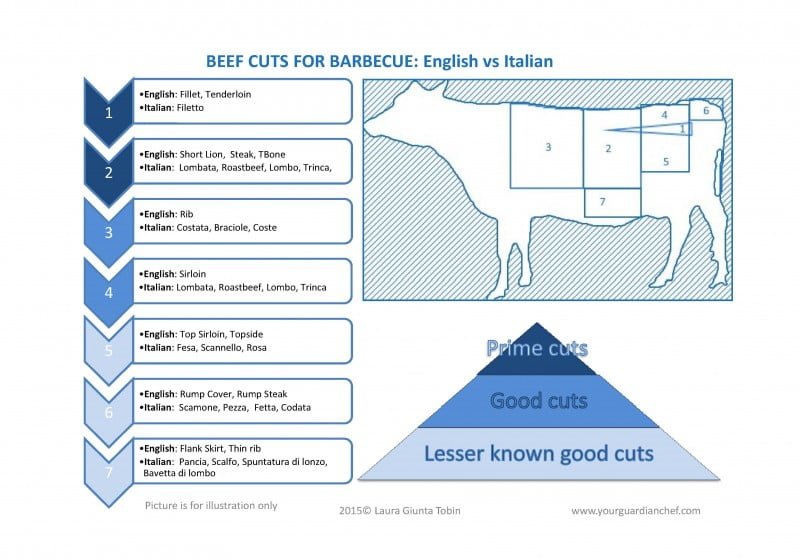
Curing Process
Initially, the process was quite simple: the lean meat was stripped from the steers' thighs, sprinkled with salt and spices like juniper berries, and then hung from the huts' ceilings to dry for 60 days.
Over time the production process was refined and developed over time, and real factories were eventually constructed.
Now a day, the seasoning process must occur in ideal weather conditions to gradually reduce humidity to achieve the desired outcome.
This process is carried out in specially air-conditioned rooms, where optimal air exchange is maintained at an average temperature of 12 to 18°C.
The duration of the curing process, which includes drying time, ranges from 4 to 8 weeks, depending on the product size and market demands.
If the product is sold in bulk and not vacuum-packed, the maturation time can be reduced to 3 weeks.
It is important to note that accelerated dehydration techniques cannot be used for both drying and maturing.
However, ventilation and natural humidity exposure are allowed, taking into account the climatic factors present in the production area.
Serving and Pairing
When serving beef bresaola, it's essential to let it shine as the star ingredient while complementing its unique flavor profile.
Bresaola's versatility allows for various serving options, from salads and antipasto platters to pizza toppings.
- To fully appreciate the flavour, consuming the Bresaola cut in thin slices of about ³/₆₄ in or 1-1.5 millimeters thick is recommended.
- Arrange thinly sliced bresaola on a plate,
- Drizzle with extra virgin olive oil, and add a touch of fresh lemon juice.
- Top the dish with arugula and shaved parmesan cheese or Grana Padano, seasoning with salt and black pepper to taste.

This combination creates a harmonious blend of flavors and textures that will delight your palate.
For a more casual pairing, consider using bresaola as an ingredient in homemade pizza or focaccia.
It adds a decadent and flavorful touch to an otherwise simple dish.
Simply arrange thin slices of bresaola on your cooked pizza or focaccia, add your favorite toppings like arugula, and sprinkle with parmesan.
Finally, bresaola is an excellent addition to any antipasto platter or charcuterie board.
Serve it at room temperature alongside accompaniments such as olives, pickles, mustard, crusty bread, and a glass of red wine.

Comparisons and Alternatives
When exploring the world of cured meats, you'll likely come across a variety of options that offer different flavors, textures, and culinary experiences.
Beef Bresaola is just one of the many delicious types of charcuterie in the world, and in this section, we will compare it to some alternatives and provide context for its unique attributes.
If you're considering alternatives like beef carpaccio or prosciutto, it's important to note that Bresaola differs in both the type of meat used and its curing process.
While beef carpaccio is typically made from raw, thinly sliced beef, Bresaola is air-dried and salted beef that has been aged for several months.
On the other hand, Prosciutto is made from pork and undergoes a different curing process, giving it a distinct flavor and texture.
You might also come across other meat options when browsing the world of salumi, such as horse, venison, and game birds.
While less common in the United States, these alternative meats can be used to create unique charcuterie options like horse or venison Bresaola, which may offer a distinct taste and texture experience.

Other types of Bresaola
- HORSE BRESAOLA: A famous and ancient specialty of Valchiavenna in the province of Sondrio, this product is obtained from processing the best cuts of horse meat. It is high protein content, a very low amount of fat, and a relevant presence of iron, zinc, vitamin B2, and PP. It is firm, compact, and free from fissures with a dark red color. It has an intense and pleasant sweet and slightly aromatic taste
- VENISON BRESAOLA: A valuable product obtained by working the best pieces of venison leg. Dark red color, intense flavor typical of game, and decidedly lean meat. Excellent tasted in thin slices au naturel or with a drizzle of delicate extra virgin olive oil and wholemeal bread. It goes very well with red and dark beers.
- GOAT VIOLIN: Produced from the thighs and shoulders of the goat it is an unusual cured meat, little known outside the area (Valchiavenna). It is dark red, almost brown in color, with an intense aroma of meat and smoke. It has a very dry, tenacious appearance but soft and mellow to the bite. Persistent and pungent taste with a nice scent made even tastier by the salt and smoke
- BRESAOLA DELLA VALCHIAVENNA: This Bresaola is produced with spiced beef smoked with pine wood. It has a bright red color, lean and compact texture, is a little woody and is not very moist. Intense and inebriating aromas of the cellar, mature meat, and smoke
- TURKEY BRESAOLA: It is a natural product of short maturation, obtained from turkey breast, the leanest part free from tendons and large nerves, shaped in nets and dried with a slight hint of smoke. It is soft on the palate with a soft pink color, slightly smoky flavor and aroma with a spicy aftertaste.
Several other aged and cured meats from around the world can be considered when exploring specialty meats.
Biltong, for example, originates from South Africa and is similar to Bresaola in that it is made from air-dried meat.
However, biltong is often marinated in vinegar and spices, giving it a unique flavor profile.
Bindenfleisch, a Swiss air-dried meat, and pastirma, a Turkish dried meat, are two other alternatives that offer variations on the traditional concept of cured meats.
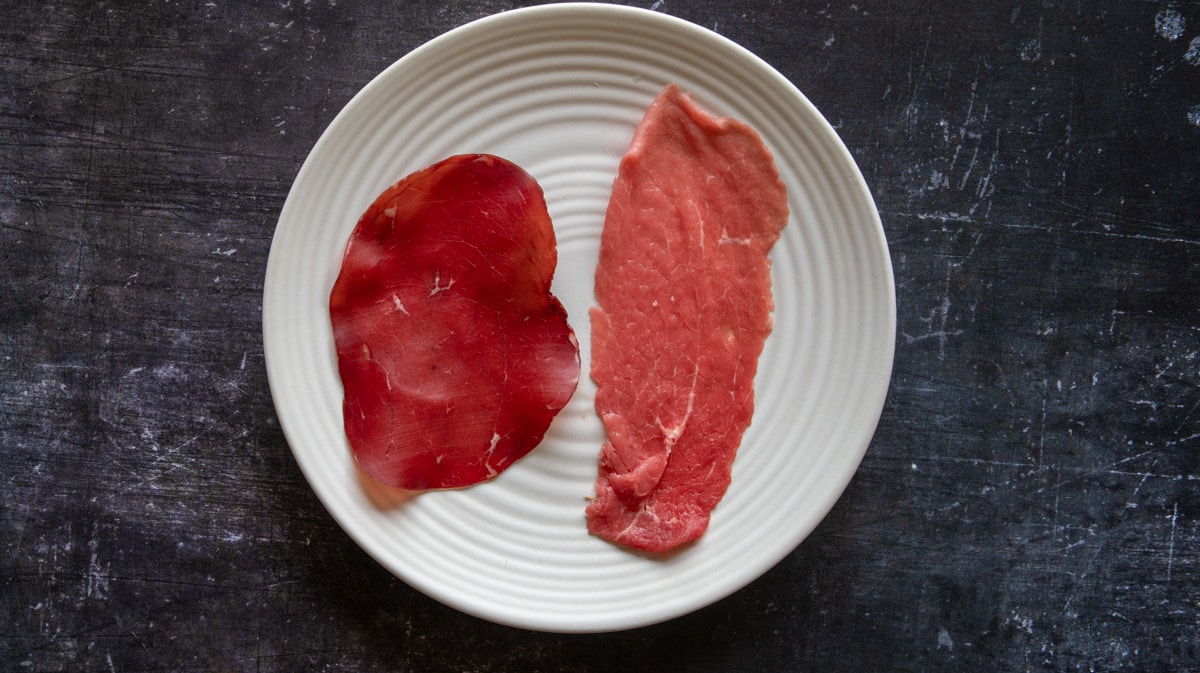
Storage and Handling
When storing bresaola, keeping it in a cool, dry place is important.
If you've purchased bresaola from a grocery store, it may come in a vacuum-sealed bag, which is ideal for maintaining freshness.
If not, you can place the bresaola in a resealable plastic vacuum bag with as little air as possible to prevent oxidation.
Always store bresaola in the refrigerator and it can last for several weeks.
Check the packaging or ask the vendor for specific expiry dates.
Handling Tips:
- When opening the vacuum-sealed bag or removing bresaola from the refrigerator, allow it to come to room temperature for about 15-30 minutes before slicing and serving. This will enhance the flavor and make it easier to slice thinly.
- The thinner the slice, the better the texture and flavor will be.
- Bresaola is much more convenient if bought whole, so an electric meat slicer is a good investment if you plan on consuming it often.
- Once you have sliced the bresaola, consuming it within a few days is best to maintain peak flavor and freshness.
- If you have any leftovers, return them to the refrigerator in a resealable plastic bag or airtight container.
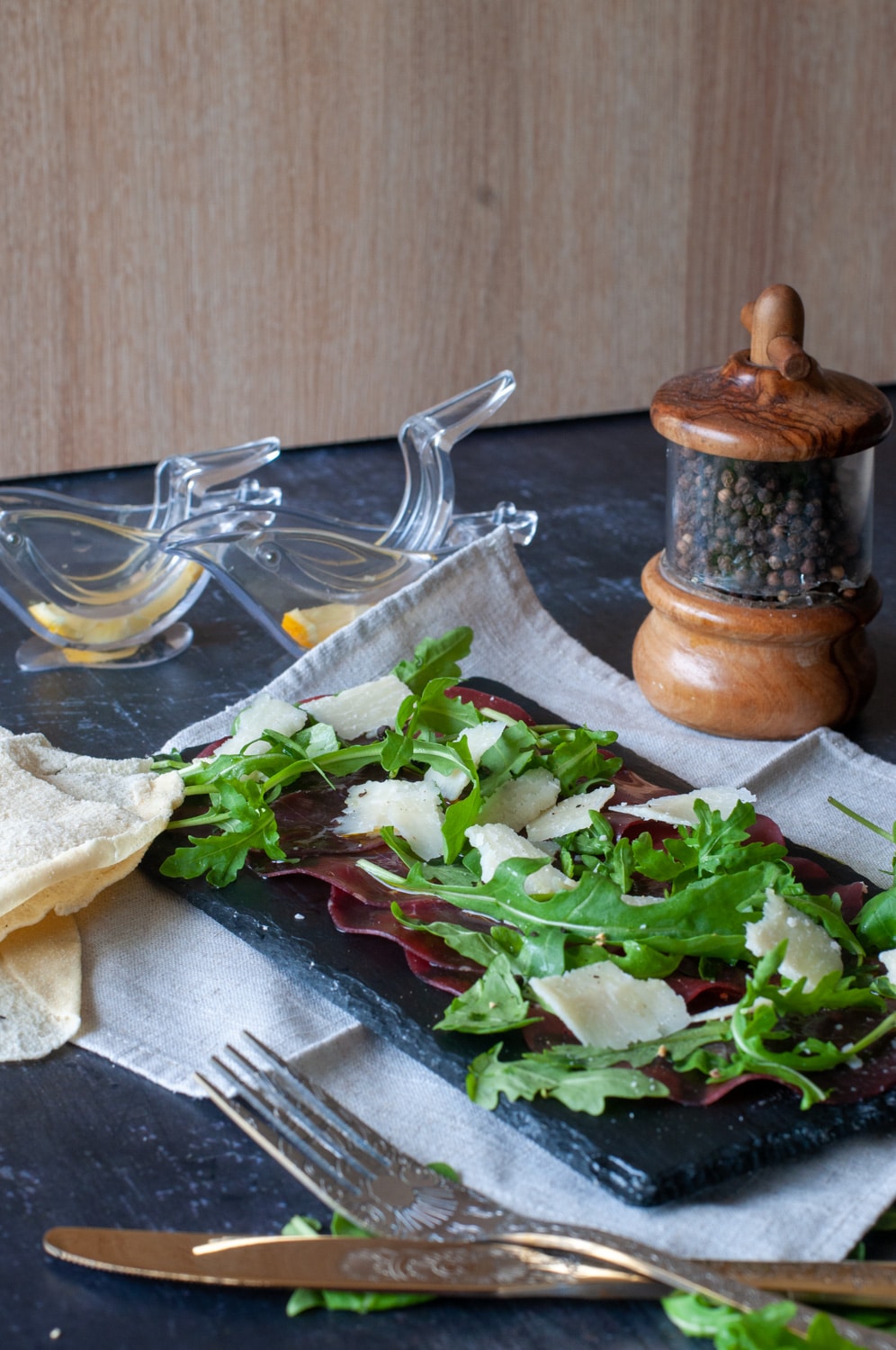
Health Benefits and Concerns
When considering its health benefits and potential concerns, it's important to focus on a few key aspects: protein content, raw meat use, and curing salt.
Being a dried salted beef, bresaola is a good source of protein for building and maintaining muscle mass.
It also has a low-fat content, and it is easy to digest. This means that including it in your diet can help you meet your protein needs while keeping the calories low.
However, it's essential to be aware of the raw meat used in making bresaola. The production process usually involves air-drying the meat for several months.
This means that consuming improperly prepared or stored bresaola may pose a risk of foodborne illnesses.
Always make sure to purchase bresaola from reputable sources and follow storage guidelines to ensure the product is safe to eat.
Lastly, the use of curing salt in bresaola is another factor to consider.
Curing salt, which is a mixture of salt and sodium nitrite, is added to the meat during the production process to preserve the meat and enhance its flavor.
However, excessive sodium intake can be linked to various health issues, such as high blood pressure and heart disease.
Therefore, it's essential to enjoy bresaola in moderation and keep an eye on your overall salt intake.
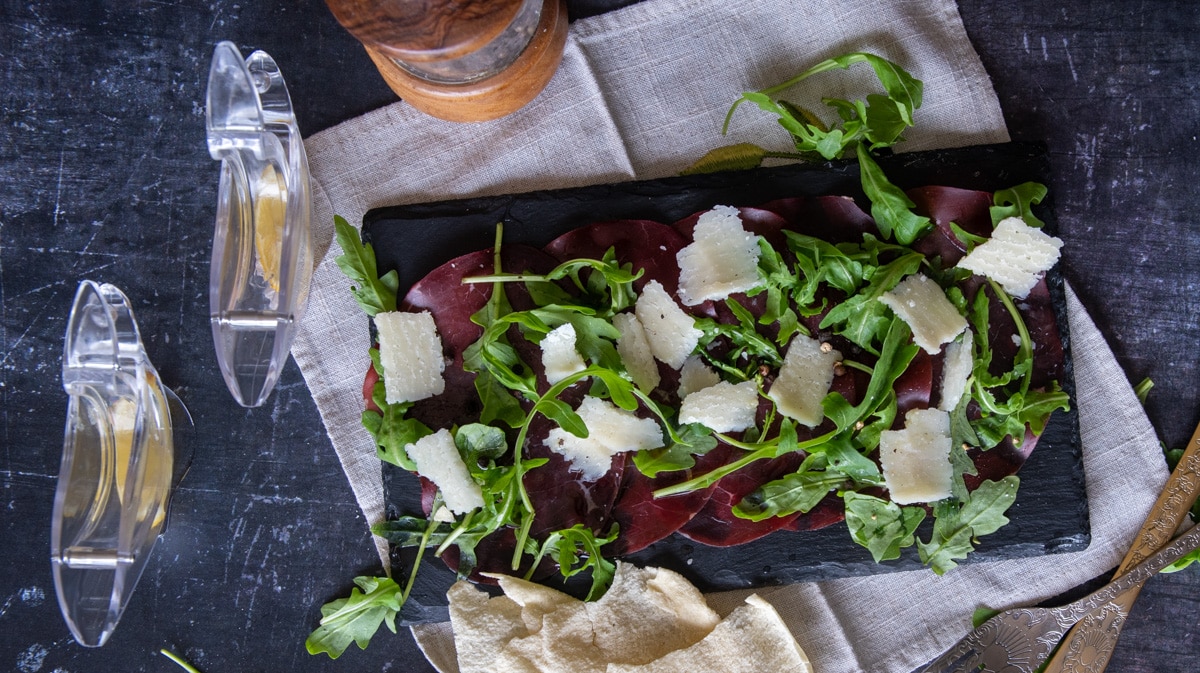
FAQ
Bresaola has a rich, savory flavor with a slightly sweet undertone. It has a soft, tender texture and can be very enjoyable when sliced thinly. The unique taste comes from the air-dried, salted curing process it undergoes, which enhances the natural flavors of the beef.
While both bresaola and carpaccio are thin slices of raw beef, they are not the same. Bresaola is an air-dried and salt-cured meat, while carpaccio is fresh, raw meat that is typically dressed with olive oil, lemon juice, and capers. The flavors and textures are distinct, but both make for a delicious appetizer.
Bresaola tends to be more expensive than other cured meats due to the specific type of beef used and the lengthy curing process. Bresaola requires lean cuts of beef, usually top round or similar high-quality cuts. The curing process is meticulous and time-consuming, sometimes taking up to two months to properly air-dry the meat.
If you are unable to find bresaola or prefer an alternative choice, several options are available. Prosciutto, a thinly-sliced Italian ham, can be an ideal substitute in terms of texture and saltiness. For a similar flavor, you may opt for other cured beef products, such as pastrami or corned beef. Keep in mind the textures and flavors may not be identical to bresaola.
The primary difference between bresaola and other types of cured beef charcuterie is the choice of meat and curing process. Bresaola is made exclusively from lean beef cuts, while other charcuterie types may use pork, venison, or even game birds. Additionally, bresaola is air-dried and salt-cured, resulting in its unique flavor and texture, which sets it apart from other cured meats.
For more cold main recipes
If you are making any of this Italian beef Bresaola, leave your comment below I would like to hear from you. You can find more delicious ideas if you FOLLOW ME on Facebook, YouTube, or sign up to my newsletter.

📋How To Serve Italian Beef Bresaola
Ingredients
- 1 lb Beef Bresaola
- 3 tablespoon extra virgin olive oil
- 1 lemon juice
- 3 oz arugula
- 3 oz shredded parmesan cheese
- salt & pepper
Instructions
- Arrange thinly sliced bresaola on a plate1 lb Beef Bresaola
- Drizzle with extra virgin olive oil, and add a touch of fresh lemon juice3 tablespoon extra virgin olive oil, 1 lemon juice
- Top the dish with arugula and shaved parmesan cheese or Grana Padano3 oz arugula, 3 oz shredded parmesan cheese
- Season with salt and black pepper to tastesalt & pepper
Video
Notes
- When opening the vacuum-sealed bag or removing bresaola from the refrigerator, allow it to come to room temperature for about 15-30 minutes before slicing and serving. This will enhance the flavor and make it easier to slice thinly.
- The thinner the slice, the better the texture and flavor will be.
- Bresaola is much more convenient if bought whole, so an electric meat slicer is a good investment if you plan on consuming it often.
- Once you have sliced the bresaola, consuming it within a few days is best to maintain peak flavor and freshness.
- If you have any leftovers, return them to the refrigerator in a resealable plastic bag or airtight container.
Nutrition








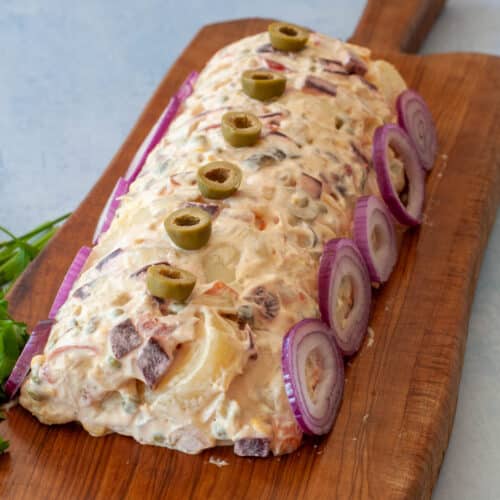




Leave a Reply